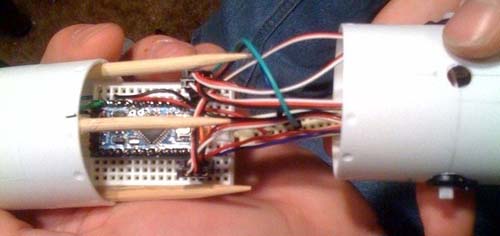Anyone who was around for the various wars and conflicts of the early 2000s probably recalls the video clips showing guided bombs finding their targets. The black-and-white clips came from TV cameras mounted in the nose of the bomb, and were used by bombardiers to visually guide the warhead to the target — often providing for a level of precision amounting to a choice of “this window or that window?” It was scary stuff, especially when you thought about what was on the other side of the window.
Surprisingly, television-guide munitions aren’t exactly new, as this video on TV-guided glide bombs in WWII indicates. According to [WWII US Bombers], research on TV guidance by the US Army Air Force started in 1943, and consisted of a plywood airframe built around a standard 2000-pound class gravity bomb. The airframe had stubby wings for lift and steerable rudders and elevators for pitch and yaw control. Underneath the warhead was a boxy fairing containing a television camera based on an iconoscope or image orthicon, while all the radio gear rode behind the warhead in the empennage. A B-17 bomber could carry two GB-4s on external hardpoints, with a bulky TV receiver provided for the bombardier to watch the bomb’s terminal glide and make fine adjustments with a joystick.
In testing, the GB-4 performed remarkably well. In an era when a good bombardier was expected to drop a bomb in a circle with a radius of about 1,200′ (365 meters) from the aim point, GB-4 operators were hitting within 200′ (60 meters). With results like that, the USAAF had high hopes for the GB-4, and ordered it into production. Sadly, though, the testing results were not replicated in combat. The USAAF’s 388th Bomber Group dropped a total of six GB-4s against four targets in the European Theater in 1944 with terrible results. The main problem reported was not being able to see the target due to reception problems, leaving the bombardiers to fly blind. In other cases, the bomb’s camera returned a picture but the contrast in the picture was so poor that steering the weapon to the target was impossible. On one unfortunate attack on a steel factory in Duren, Germany, the only building with enough contrast to serve as an aiming point was a church six miles from the target.
The GB-4’s battlefield service was short and inglorious, with most of the 1,200 packages delivered never being used. TV-guided bombs would have to wait for another war, and ironically it would be the postwar boom in consumer electronics and the explosion of TV into popular culture would move the technology along enough to make it possible.












